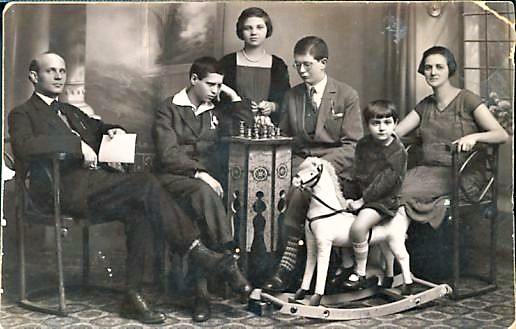
The collective portrait of Romanian Jews, as reflected in the photographs of women, men, and children presented in this chapter, portray how members of different communities sought to define their identity through attire, and the manner in which they documented themselves, in the studio, at home and abroad. These photographs reflect the tension between their wish to differentiate themselves or to assimilate, as well as the socio-economic status of the members of the various Romanian Jewish communities.
Beginning in the mid-19th century, when photography became a form of documentation and communication in Romania, the struggle for emancipation began, and Jews documented themselves through photography. Therefore, the photographs that came to us reflect the image of the Jews, who, for the most part, sought to integrate into society and maintain a similar appearance, and sometimes quite the same, as the local people in the cities, towns and villages where they lived. On the other hand, photographs of the ultra-Orthodox and Hasidim expressed their desire to differentiate themselves from general society and to stand out, through among other things, particular clothing.
Romanian Jews, who for the most part embraced modern attire as an expression of identification and their desire to integrate into society, sometimes chose to be photographed in Romanian folk attire similar to Romania's first Queen Elisabeta (1843-1916). Elisabeta was also the first to adopt popular attire as an expression of national identification. Up until that time, folk dress was considered to be simply peasant wear, and girls from the noble families in Romania preferred to wear clothes imported from Europe.
Most of the photographs presented in this chapter are taken from materials found in private collections that we have gathered as part of the documentation carried out in the framework of the Virtual Museum. These photos represent the few families who have managed to save their collections, and tell the story of the Romanian Jewish community for themselves and for those who did not survive. In the ”Collections” section, we present materials in the custody of institutions, collectors or various families who have preserved their experiences through photographs and saved documents, thus creating their own chronicles. These collections reflect the multitude of identities of the different communities, and enable us to present a more complex picture of the Romanian Jews.
The photographs include those taken in studios, as well as photographs showing family members at home and abroad, documenting important family life events. Some were printed as postcards, then a new form of communication, as means of contact with family and friends with whom they had to separate due to immigration or other reasons. The photographs, postcards and texts written on them tell of the men, women and children documented therein, of the events commemorated, and constitute a record that would not have otherwise been preserved. When they were taken, they were a form of communication, and today they also symbolically represent those who were not able to be commemorated in any other way. They record family and community experiences, and together they have become part of the foundation of our collective memory.